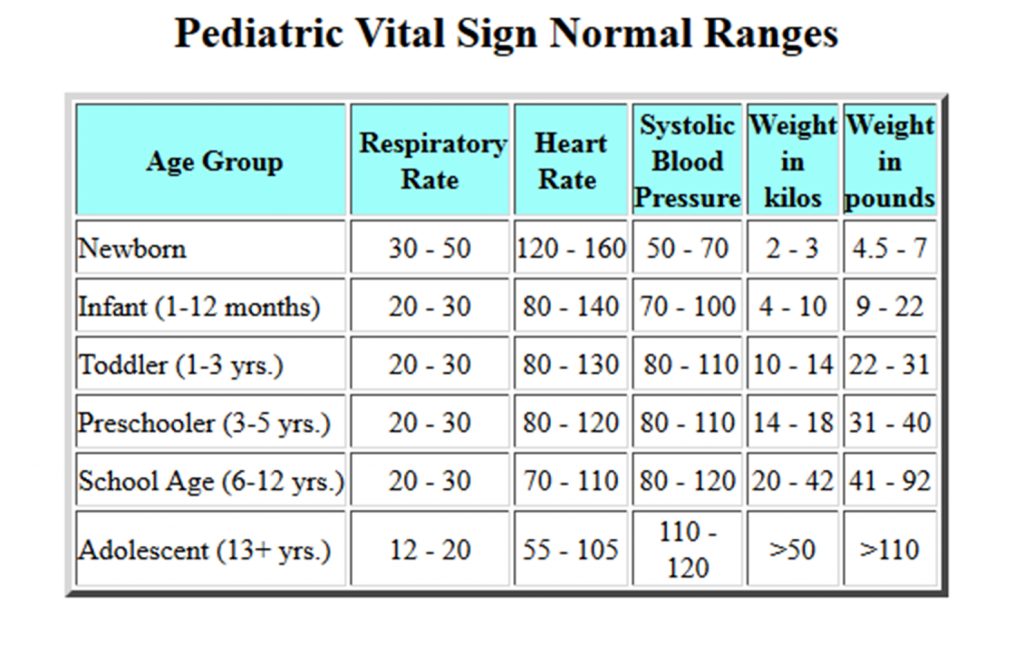How Vital Signs Vary With Age
Published (updated: ).
As one can see from the chart below, normal vital signs vary with age. As the newborn (birth to 30 days) ages, respirations and pulse progressively get slower while systolic blood pressure becomes higher. Physiologically, these changes are associated with body surface area to weight. This ratio is seen in nature where smaller animals tend to have faster metabolisms that larger animals. As the newborn eventually grows into an adolescent, the body surface area to weight ratio decreases.

Once the infant grows into an early adult (age 20 – 40) the heart rate averages 60 beats per mine, respirations 12 – 20 breaths a mine and blood pressure 120/70. As the adult reaches middle adulthood (age 41 – 60) these numbers change a little with a heart rate of 70 beats per mine, respirations a little faster at 16 – 20 breaths per minute and a slightly higher blood pressure 120/80 (good luck finding a patient that calls 911 with a blood pressure that normal). As the middle aged person gets older, it is common to expect changes in vision and hearing. Further, the middle aged person frequently worries about their cardiovascular health as well as cancer. As people get older, they often find it harder to manage their weight. In the late 40’s and early 50’s, many women experience menopause (as she is no longer producing estrogen and progesterone in the same manner she did when she was younger).
All is not lost on the middle aged person. Middle aged people tend to be more conservative in their approaches to life, often approaching life’s problems as problems as opposed to threats. Middle aged people sometimes struggle with the passage of their own children into adulthood. This lack of familial interaction leads to empty nest syndrome (the feeling of grief from the vacuum created by their children moving on). The vast majority of middle aged people struggle with financial commitments either on behalf of their parents or their children.

As the infant gets even older and reaches late adulthood (age 61 and older) their vital signs can remain the same or they could have suffered poor health in their earlier years. Hypertension, diabetes, and cardiac arrhythmias seem to be the most common. It is usually expected that the late adult has at least some measure of hypertension as their efficiency of their circulatory system system decreases. Their functional blood volume decreases which makes them less capable of tolerating tachycardias. The respiratory system of the late adult sees it’s share of changes as well. The muscles of the chest wall weaken. Lung capacity is diminished leading to less gas exchange in the alveoli.
